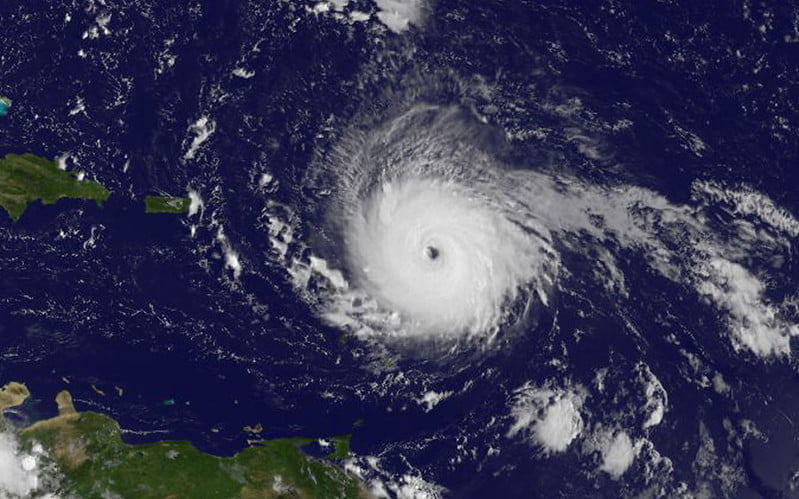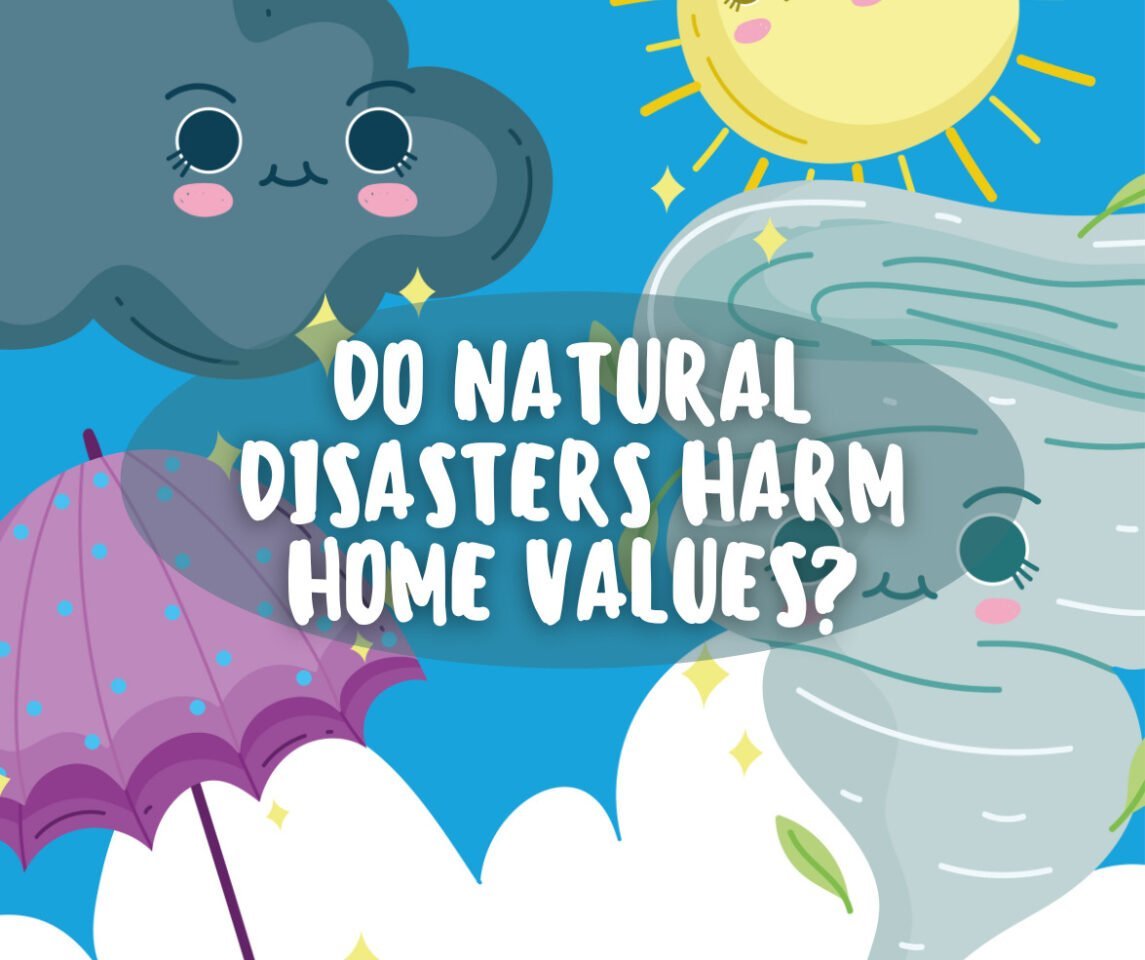Maybe It Does And Maybe It Doesn’t
Earthquakes, hurricanes and other natural disasters have increased in frequency and severity over the past few decades. As home values continue to rise higher and higher, it’s crucial that homeowners and real estate agents know the impact of natural disasters on the value of a house.
There isn’t any clear link between natural disasters and the home market’s reaction. One might believe that the impact of a natural catastrophe would push the prices of homes down because of the destruction of buildings and fears of repeat events. However, this isn’t always the situation.
Real estate agents are greatly affected by the changes to market prices that arise from natural catastrophes. The decline in property value can reduce an agent’s earnings. At the same time, an increasing demand in the areas close to an area of devastation may result in an increase in potential buyers.
We’ll look at the elements that affect how natural disasters can affect the worth of your home. We’ll then look at some actual instances.
What Are Some Of The Factors That Affect Home Value Following A Natural Disaster?

There are a variety of aspects that affect the response of the real estate market to natural disasters:
- The extent of the damage
- The location of the damage
- The market demand for a location
- Practices and policies of the owner’s home insurance company
Extent of the Damage
A home damaged by a significant amount will be more affected by natural disasters than a house with less damage. Natural disaster damage could occur at any time in this range. It could be the biggest factor determining how much a house’s worth will increase or decrease following an unforeseeable natural disaster or catastrophe.
If the damage can’t be remedied, if the evidence of past disasters remains and is not addressed, it could reduce the worth of your home. In the case of flooding, for example, if it is causing stains to your walls or causing a crack within your foundation, this indicates that your home could be in danger of being flooded again. So, the home could be less valuable.
Localization of the Damage
Natural disasters are likely to affect most homes within a particular community. Floods, for instance, are a problem for homes away from a water source or not on top of a hill. That said, natural disasters can also destroy houses in a random manner. They are famous for taking half a block away and leaving the opposite end of the road unharmed. Additionally, other natural disasters can affect homes differently, depending on the homes’ architecture. For instance, earthquakes could cause damage to older structures, whereas contemporary structures can withstand them perfectly.
If a large zone is damaged, the value of the properties within the affected area will likely decline. This kind of destruction will likely affect local agriculture as well as supply chains, which will make the region less appealing within the next few years. If the region is small and the housing market in that area is not as strong, it likely won’t take an enormous toll.
Public Demand For The Location Of Real Estate
In many parts of the United States, residents have a certain familiarity with frequent catastrophes occurring within that region. Residents are aware of the dangers and decide to stay there regardless. Few locations in the world aren’t prone to a catastrophe or any other type of disaster. In the past, California was the hot locale, even with the constant risk of an earthquake. Nowadays, people are moving to Florida, famous for its difficult hurricane season, and Texas, vulnerable to hurricanes, floods, and tornadoes.
If your geographic location is popular (it could be because of the weather, cost of living, etc.), it will be less impacted by natural disasters than less popular markets.
Insurance Policies and Practices
Insurance companies create policies and “best practices” to govern the effect of home value after a natural disaster. When an insurance company feels they can anticipate a disaster’s re-occurrence, they often increase homeowners’ insurance premiums to reduce the threat. The increase in the cost of home ownership in these areas has led to a decrease in demand. If this happens, the value of homes may also fall.
However, the insurance industry often makes the possibility of building in places that are susceptible to natural disasters. For instance, homeowners like Brian Braughston (reported on by outside sources) would almost be unable to continue living at his house in Kingwood, Texas. The property was submerged over 22 times from 1979 between 1979 and 2017. Braughston isn’t willing to walk out of his home and is willing to pay premiums for insurance to stay in the neighborhood.
Real-World Examples of Home Values Reacting to Natural Disasters
Here are a few instances of how natural disasters impacted the value of homes.
Hurricane Harvey, 2017: Much of Texas, Particularly Houston
In the aftermath of the devastating hurricane Harvey in August of 2017, The Houston property market saw an inventory drop, partially due to houses that could not be saved because of flood damages. Since Houston was still a highly sought-after location, the decreased availability, in conjunction with buyers’ needs, drove the value of homes higher for homes that were not directly affected.
In August 2018, the sales of single-family homes in Houston had increased 40.3 percent from August 2017. The value of homes was rising 2.1 percent.
Paradise Wildfires, 2018: Paradise, California
In 2018, the tiny village of Paradise, California, was destroyed by fires. A majority of the structures in Paradise were destroyed, with only a small amount of real estate left.
Sales of homes in Paradise fell by 40%-50 percent. The Paradise homeowners who were able to relocate moved into adjacent Butte as well as Sonoma Counties, which were in no way affected by the flames. Within the 3 to 6 months following the fire, Butte saw a 3 percent increase in the value of homes, while Sonoma saw a 6 percent increase.
Rising Sea Levels, Ongoing: Florida’s Coastal Regions
The increasing levels of the sea caused by the effects of climate change is an illustration of a natural catastrophe that burns slowly. Contrary to many disasters, which occur quickly and without warning, we’ve watched sea levels increase for a long time.
Since 2018, the real estate price increases in areas exposed to rising sea levels have shown lower value increases than those less vulnerable. At the time of writing, the difference in value between less exposed areas and those that are more exposed was between 5% and 10 percent.
However, that doesn’t mean they don’t want to buy! According to an agent from Coldwell Banker Schmitt Real Estate Co. located in Key West, the market remains hot on March 20, 2021.
“We still have low inventory and an influx of buyers,” the agent said. “And the market is witnessing price rises. Although the market may get cooler at any moment, there’s nothing to suggest that homeowners or buyers are sufficiently concerned about the rising sea level to decide to move.”
What Can Real Estate Agents Do to Protect Their Clients
In your role as a certified real estate agent, You are bound by the fiduciary obligation to safeguard your customers’ interests.
Here are some strategies to safeguard your customers concerning the value of their homes and natural disasters:
- You are responsible for being aware of which parts of your marketplace are vulnerable to natural catastrophes.
- It is important to be transparent. Your clients should be aware of their risks while they’re in areas that are prone to natural disasters.
- Incorporate risk into the value calculation.
- Discuss the possibilities with your customers. Flood insurance, for instance, can help customers think about areas they might otherwise stay clear of.
- Donate money to emergency kits for the homes of residents and schools.
- Utilize the possibility of risk for your client’s benefit in negotiating counteroffers and offers.
- In the event of significant destruction after a catastrophe, Be a role model within your local community. Organize projects that will help to repair and reconstruct any damage done by said, “natural disaster.”
Disasters are bound to happen. However, they’re not an end-of-the-world for property values. Be prepared in advance of a catastrophe. When your region is affected by a disaster, be proactive to assist your community’s recovery.
